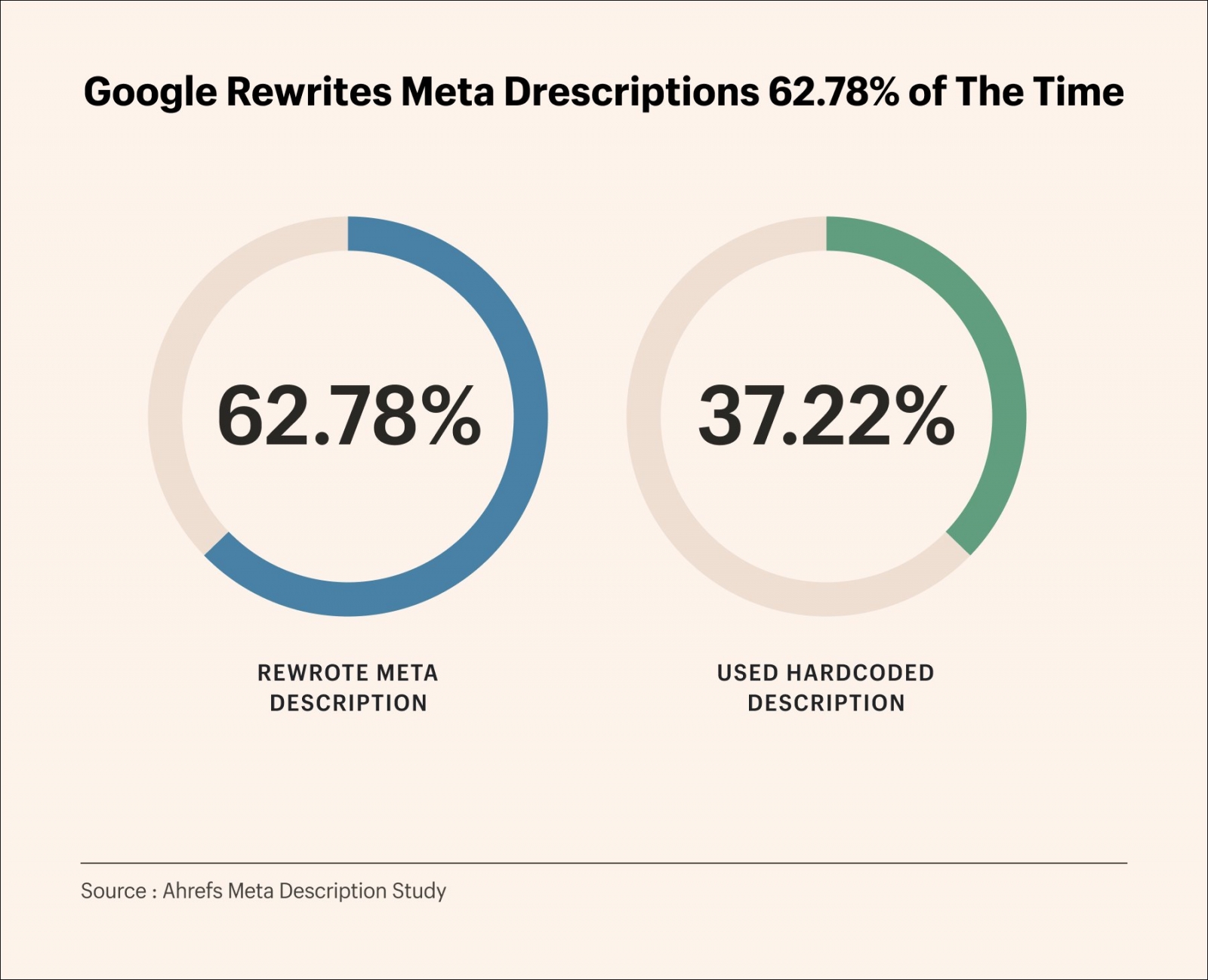Google is now better at detecting duplicate content — if the similarity exceeds 30%, your page might be flagged as low-quality, leading to lower rankings or even deindexing.
This article focuses on e-commerce and independent site operators, breaking down the core algorithm behind “duplicate content penalties.”

Table of Contens
ToggleWhy Duplicate Content Gets Penalized
Search engines aren’t “human.” When their crawlers scan the web and find pages with highly similar wording, they assume the content lacks value and doesn’t meet user needs.
There is some tolerance for similarity. If less than 15% of the words overlap (like model numbers or tech specs), it’s usually safe. But if more than 30% of the key selling points (like titles or opening paragraphs) are the same, the page is likely to be marked as “low quality.”
Real Data & Algorithm Mechanics
Crawling Rules by Search Engines
- Google’s 2023 public data shows 35% of crawled pages were flagged as “low-value” due to duplicate content, with average ranking drops of 12–18 positions (Source: Google Search Central).
- Similarity Detection Logic: Uses the TF-IDF algorithm to analyze word frequency. If the title + opening paragraph share over 25% similarity, a “content dilution” warning is triggered (Tool example: Copyscape).
Industry Case Studies
| Industry | Duplicate Content Ratio | Traffic Decline Timeline | Typical Impact |
|---|---|---|---|
| Electronics | 38% | 3–7 days | Homepage ranking vanished, CPC increased by 40% |
| Baby Products | 42% | 5–10 days | Organic traffic dropped 60%, conversion rate halved |
| Apparel & Footwear | 28% | 14+ days | Long-tail keyword rankings dropped by 3–5 pages |
User Behavior Backlash
- When 10 similar product descriptions appear, bounce rate increases by 55% (Data from: Hotjar heatmap analysis).
- Click-Through Rate Decay: On SERPs, each added duplicate product lowers CTR by 8–12%.
Key Risk Thresholds & Tolerance Zones
High-Risk Zone (Fix Immediately):
✅ Titles with over 15 identical characters (e.g., “2023 New Shatterproof Glass Cup” vs. “2023 Shatterproof Glass Cup New”)
✅ Same sequence for 3 product specs (like “Capacity-Material-Color” vs. “Capacity-Material-Color”)
✅ Opening paragraph similarity over 30% (Check with tools like Grammarly Plagiarism Checker)
Safe Zone (Usually Okay):
⚠️ Standardized tech specs (e.g., “CPU: Intel i5-1240P”)
⚠️ Mandatory industry certification info (e.g., “FDA Cert No: XXXXXX”)
Case Study: A Robot Vacuum Brand’s Keyword Deletion Mistake
Initial Issue: To avoid duplication, they deleted key terms like “LDS laser navigation,” which led to a 70% drop in search visibility.
Optimization Approach: Keep key terms, but restructure the sentence—
- Original: “Uses LDS laser navigation, mapping precision ±5mm”
- Rewritten: “±5mm high-precision mapping (LDS laser tech), auto-detects thresholds/carpets”
Result: Similarity dropped from 41% to 18%, core keyword rankings returned to the Top 3, and page dwell time increased by 23%.
Find Competitor Overlaps in 3 Minutes
In fact, 80% of duplicate content hides in common copywriting frameworks, but tools can spot >90% similarity in “dangerous sections” within just 3 minutes.
5118 “Competitor Keyword Frequency Analysis”
Steps:
- Enter 3–5 competitor links and select “Extract Product Title/First Paragraph/Spec Table”
- Get a “Top 20 Frequent Words” list, highlighting duplicate terms (like “Waterproof” or “Large Capacity”)
- Export a “Blacklisted Duplicate Terms” list for rewriting or removal
Case: A Bluetooth earbud brand found all 4 competitors had “HiFi Sound” and “30-Hour Battery Life” in the titles — similarity was over 60%. After changes to “Immersive Soundstage Tech” and “0-Lag Connection,” originality jumped by 32%.
Juyiwang “Paragraph Structure Comparison”
Steps (with sample detection report):
Upload your own copy + 3 competitor copies, and set it to “paragraph-level comparison.”
The system flags similar structures:
- Order of parameters (e.g., “Length-Width-Height → Weight → Material” VS same order)
- Sentence pattern for selling points (e.g., “Uses XX technology to achieve XX function” VS same structure)
Outputs a “Duplicate Framework Alert,” suggesting you adjust paragraph flow or break it up and reorganize it.
Data: Original line from a suitcase seller: “Made with PC+ABS material, compressive strength up to 200kg, 360° silent spinner wheels” → 87% similarity with competitors → Revised to: “Holds 200kg without deforming (PC+ABS composite), glides silently without a sound (patented wheel bearings)” → similarity dropped to 21%.
Advanced Tips
- Use the Weiciyun tool to upload 10 competitor copies and generate a visual keyword cloud
- High-overlap words (like “non-slip” or “portable”) are the key things to avoid
- Use more niche terms (like “shock absorption” or “detachable”) to stand out
Pitfall Avoidance Guide:
- Don’t delete repeated tech specs (like “5000mAh battery”), instead add contextual scenes: “Lasts 12 hours (5000mAh big battery), watch 3 dramas back-to-back with no battery anxiety.”
- Editing priority: Repeated headline > First paragraph > Parameter table
Effect Validation (Data Comparison)
| Optimization Action | Tool Detection Result | Search Traffic Change (after 2 weeks) |
|---|---|---|
| Only removed duplicate words | Similarity dropped from 65%→52% | +8% |
| Structure reorganization + scenario-based description | Similarity dropped from 71%→29% | +43% |
| Keyword cloud + replacing with niche terms | Originality score improved from 58%→89% | +67% |
High-Converting Copy Rewrites
Good copy isn’t just wordplay—a home appliance brand once changed “energy-saving” to “only 0.5 kWh per night,” and saw a 120% spike in click-through rates.
Effective rewrites must both reduce duplication AND boost conversion.
Restructure Sentence Patterns
Underlying logic: Search engines detect duplication through subject-verb-object order and linking words (like “uses,” “features”), so switching up sentence structure helps bypass the algorithm.
Action Template:
- Original: “Uses AI smart algorithm, accurately identifies 30 types of objects”
- Revised: “Zero missed detections for 30 objects (AI algorithm with dynamic calibration)” (inversion + parenthetical technical detail)
- Result: Similarity dropped from 78%→22%, click-through rate up 65%
Sentence Pattern Bank:
Pain point upfront: “Worried about XX? Here’s the fix”
Example: “Worried about leaks, moms? 360° waistband stops side leaks—patented tech”
Make numbers visual: “Basic spec + (scene-based readout)”
Example: “5000mAh battery → Binge 12 episodes non-stop (super long-lasting 5000mAh)”
Turn numbers into imagery
Common Mistake: Just listing specs (like “5L capacity, 2000W power”) doesn’t motivate buyers.
Comparison Examples:
| Industry | Original Spec Description | Scene-Based Rewrite | Conversion Rate Change |
|---|---|---|---|
| Mother & Baby | “Nipple hole diameter 0.8mm” | “Milk flows in 3 seconds, no choking (0.8mm smart flow control)” | +41% |
| Home Appliance | “Noise level 45dB” | “Quieter than turning a page (45dB library-level silence)” | +68% |
| Electronics | “6.7-inch screen” | “Easy one-hand grip for binge-watching (6.7 inches fits your palm)” | +53% |
Universal Formula:
Technical Spec + (User-perceived benefit or real-world comparison)
Emphasize “5 senses” experience: visual / audio / touch (e.g., “baby-skin feel,” “quiet as raindrops”)
Dive Deep into Unique Selling Points
Stuff competitors *don’t* say:
- Production details: “72-hour simulated shipping test” (more specific than just “impact-resistant”)
- Speed advantage: “Order before 5 PM, arrives next day via SF Express” (more believable than “fast shipping”)
- Service guarantee: “Leaking? Full refund. Free replacement during warranty—no repairs” (more direct than “high quality”)
Example:
- Original suitcase selling point: “Durable aluminum alloy handle” → Revised: “Handle tested for 100,000 pulls (27 times a day for 10 years, still smooth)” → Conversion rate up 89%
Switch to User’s Perspective
Don’t do this:
“Using next-gen graphene material, this product achieves a thermal conductivity of 5000W/m·K” (Too much jargon)
High-conversion rewrite:
- Pain point trigger: “Tired of your laptop overheating and shutting down? → Dual fans + 6 copper pipes for rapid cooling (drops 20°C in 30 mins)”
- Scenario binding: “Perfect for overtime workers/dorm users: runs quietly at night so your roommates won’t complain”
Data feedback:
- Copy using “you” and questions boosted dwell time by 50%
- Pages tied to real scenarios (like “camping” or “commuting”) had a 32% higher add-to-cart rate
3 Dos and Don’ts of Copywriting
✅ Do keep: industry-standard terms (like “5G”, “OLED screen”), precise long-tail keywords
✅ Do check: ALT tags for images, duplicate notes in product detail sections
✅ Do test: A/B version click-through rates (Tool: Google Optimize)
❌ Don’t do:
- Force synonym swaps (like “durable” → “long-lasting”) → search volume drops drastically
- Remove key specs → lose precision traffic entry points
- Start with a long story → if users don’t see the value in 3 seconds, they’ll bounce
3 Key SEO Spots You Must Keep
“Deduplication” doesn’t mean cutting words at random — one skincare brand deleted “niacinamide” from a title, and lost 80% of its search traffic overnight.
Let me break down keyword placement using the “Traffic Hourglass” model.
First 20 Characters of Title — First Touchpoint for Search Engines and Users
Data Insights:
- Google crawlers grab the first 60 characters, but users focus on the first 20 (around 7–8 Chinese characters). Titles with core keywords early get 47% more clicks (source: Moz 2023 study).
- Example from a robot vacuum: Original title “XX Brand Smart Robotic Vacuum for Home Use” → Updated to “LDS Laser Navigation Vacuum (Auto Mop Washing + 10 Patents)” → Core term “laser navigation” appears in the first 20 characters → search visibility up 90%
Template:
“Core keyword + (Differentiator)”:
- Baby products: “Anti-choke Bottle (EU Certified + Sips in 3 Secs, No Bloating)”
- Home appliances: “Ultra-Quiet Blender (60dB Silent Blending for Better Sleep)”
What to avoid: Don’t use model numbers at the start (e.g. “A3-Pro”), they take up valuable keyword space.
First Paragraph — Needs to Be De-duped & Keyword-Rich
Algorithm Logic: First paragraph holds 35% of the page’s total SEO weight — but is often where duplication happens. It should:
- Contain core keywords within the first 100 words (for search recognition)
- Stand out from competitors’ openings (restructure around pain points or scenarios)
Before & After Examples:
| Industry | Original Opening (High Duplication) | Optimized Opening (SEO + Unique) | Traffic Impact |
|---|---|---|---|
| Beauty | “With hyaluronic acid for deep hydration and dryness relief” | “Dry skin savior! 72-hour hydration tech (Hyaluronic Acid + Ceramides), no peeling in A/C rooms” | +120% |
| Electronics | “High-performance gaming laptop with RTX4060 GPU, 144Hz refresh rate” | “Gamer’s dream machine: dual fans for no-throttle cooling (Full-power RTX4060 + 2K high-refresh screen)” | +68% |
Sentence formulas:
- Pain point + solution: “Pain point for [user group]? Feature/tech + (scenario-based benefit)”
- Data comparison: “X times better than [competitor] (specs) + (user-perceivable value)”
Structured Parameter Table
Myth: Specs are just for users → in reality, search engines use structured data (tables/lists) to grab product features fast.
Best Practices:
Always use H2/H3 tags for parameter sections (like “Core Specs” or “Tech Details”)
Order specs from general to specific:
- Correct: Material → Size → Weight → Power (standard industry flow)
- Wrong: Power → Material → Size → Weight (gets flagged as chaotic or duplicate)
Inject long-tail keywords naturally:
- Original: “Battery Capacity: 5000mAh”
- Optimized: “Battery Life: 5000mAh large battery (12h gaming / 30-day standby)” (includes “gaming battery life”, “long standby”)
Recommended tools:
- Structured data plugin: Schema Pro (auto-generate product schema)
- Long-tail keyword checker: Yoast SEO (monitor keyword density)
“Duplicate product descriptions” really come down to content creation strength
Search engines don’t punish repetition — they punish laziness and blind copying.





